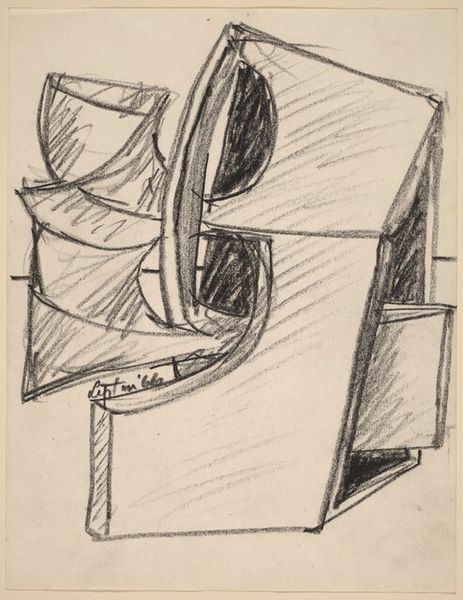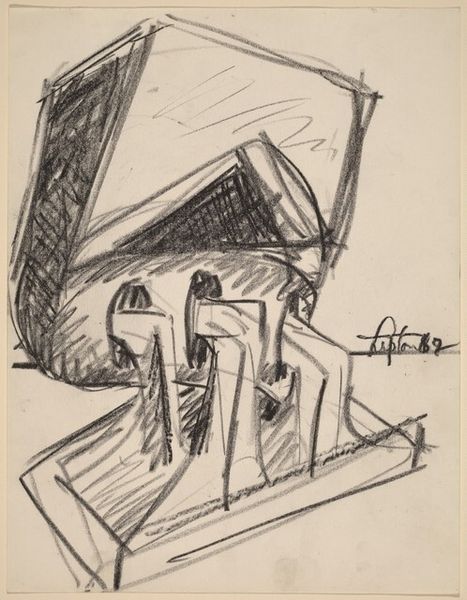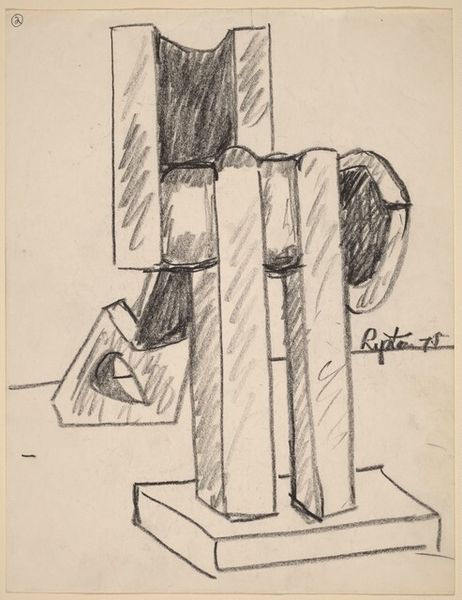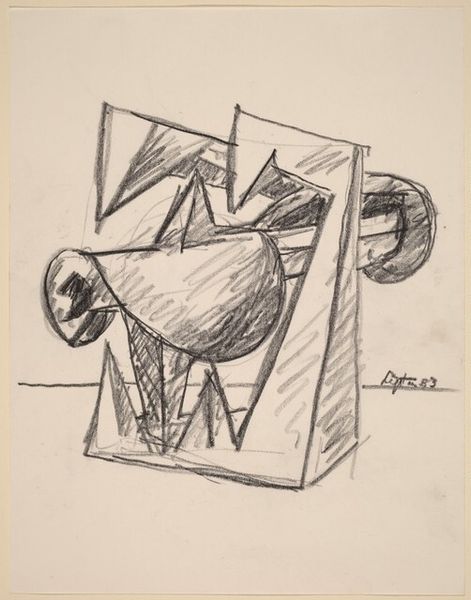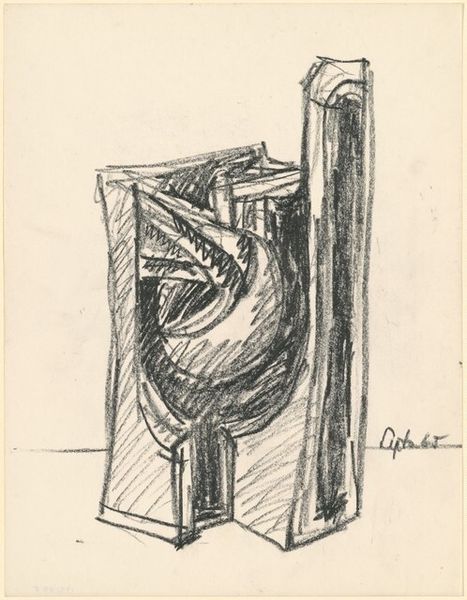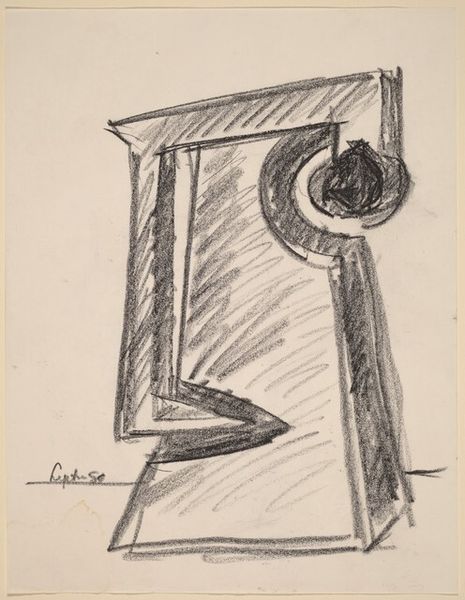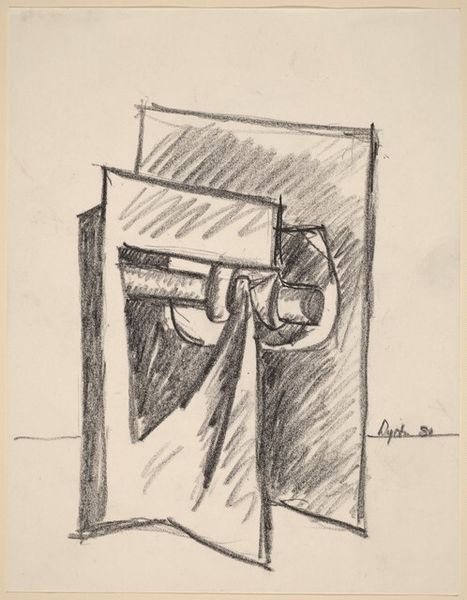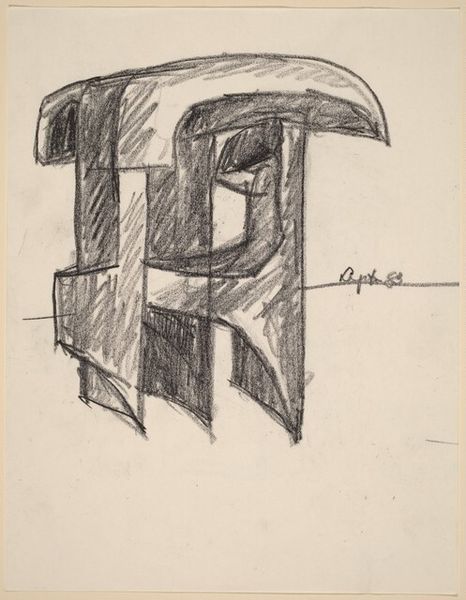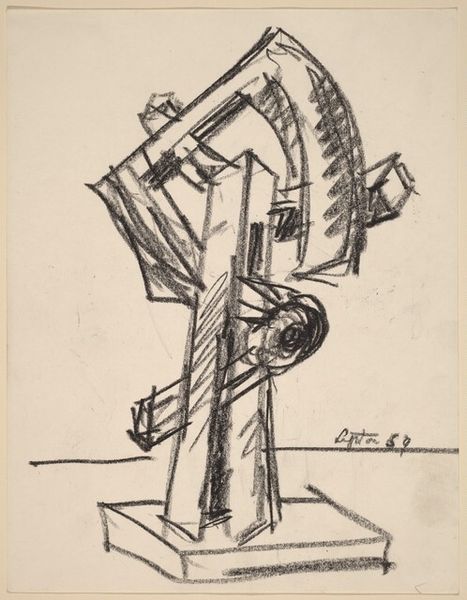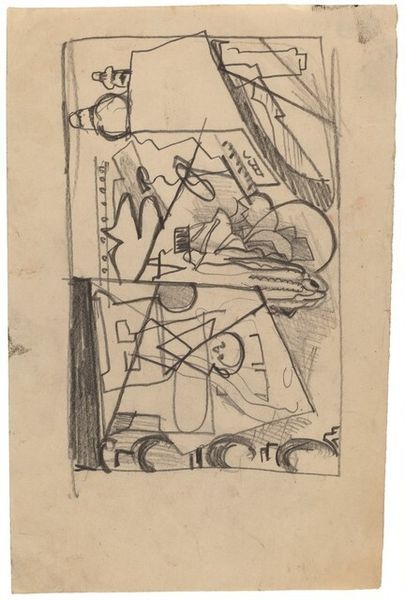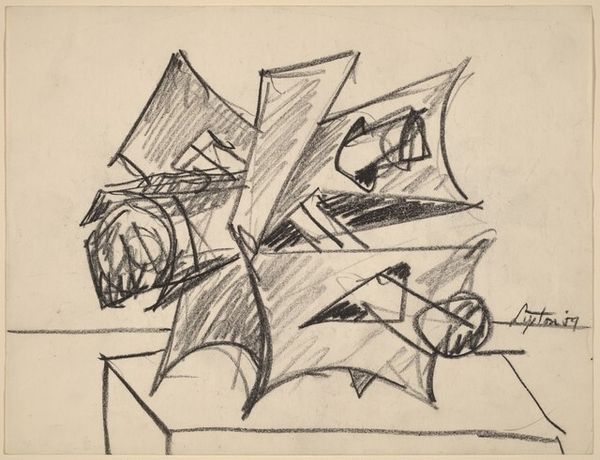
drawing, charcoal
#
abstract-expressionism
#
drawing
#
form
#
geometric
#
charcoal
Dimensions: sheet: 27.94 × 21.59 cm (11 × 8 1/2 in.)
Copyright: National Gallery of Art: CC0 1.0
Editor: Here we have Seymour Lipton's Untitled, a charcoal drawing from 1967. There’s an object trapped inside this geometric form and it feels kind of menacing. What do you see in this piece? Curator: The immediate impression is of confinement, right? The aggressive charcoal strokes trap a shape within another shape, and in this tension, it asks important questions about Abstract Expressionism’s dialogue with social realities. We can consider this drawing not merely as an exploration of form, but as a response to the sociopolitical turbulence of the 1960s. Editor: So you are saying the chaos inside reflects external tensions of the time? Curator: Precisely. What sociopolitical issues were prevalent in 1967, that might have impacted artists? Consider things such as civil rights, anti-war sentiment, second wave feminism... the drawing's containment, then, becomes a metaphor for societal constraints and the struggle for liberation and expression during this time. The dark charcoal embodies the anxiety and the form seeks a language of protest. Editor: I never considered that this piece, with its harsh lines, could reflect larger social concerns. Curator: Right. Art isn’t created in a vacuum. Lipton, in his own way, may be contributing to visual vocabularies for discussing such experiences. Thinking about his Jewish identity is key, also; it may allude to feelings of diaspora. Can you see a possible connection there? Editor: Perhaps the enclosure might speak to the experience of marginalization, of being trapped by external forces? It gives me so much to think about... thanks! Curator: Likewise! Viewing this abstract drawing through that lens deepens our understanding, providing a necessary narrative on Lipton's work and abstract expressionism in general.
Comments
No comments
Be the first to comment and join the conversation on the ultimate creative platform.
